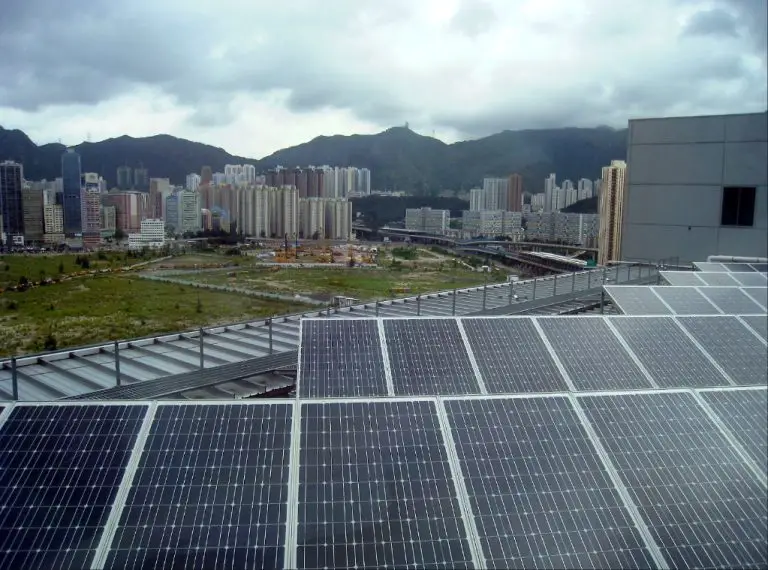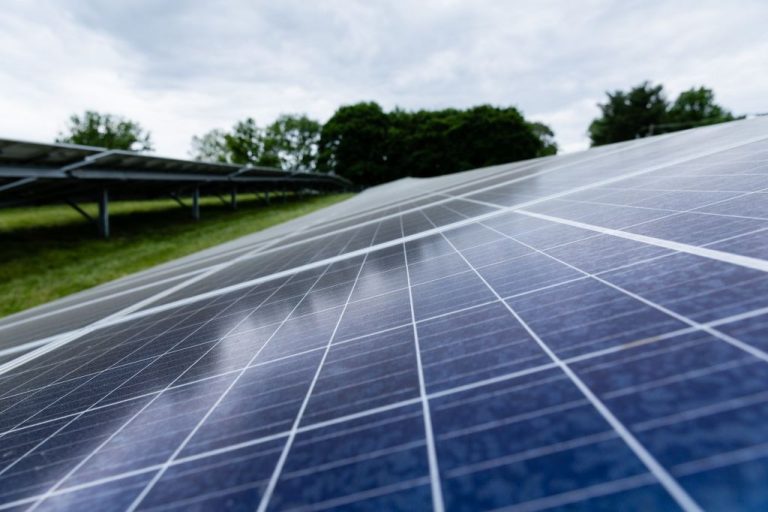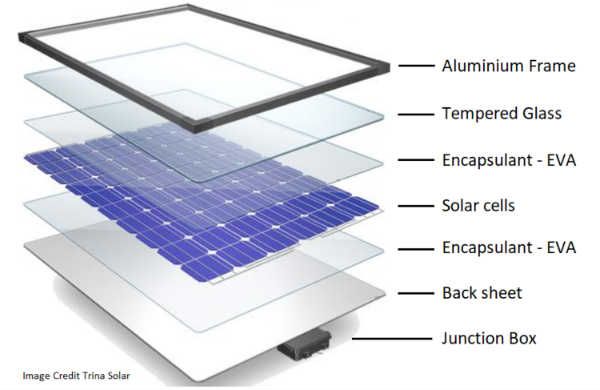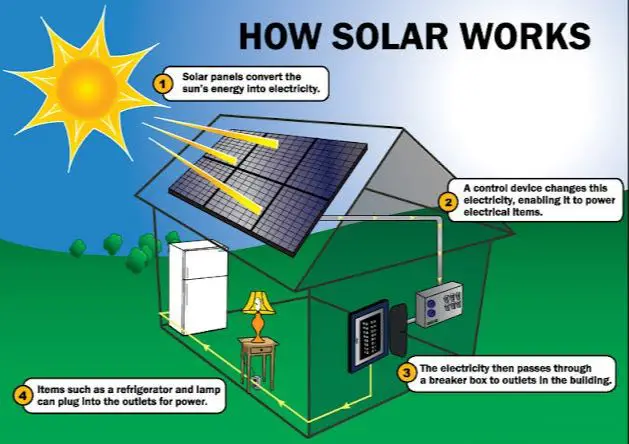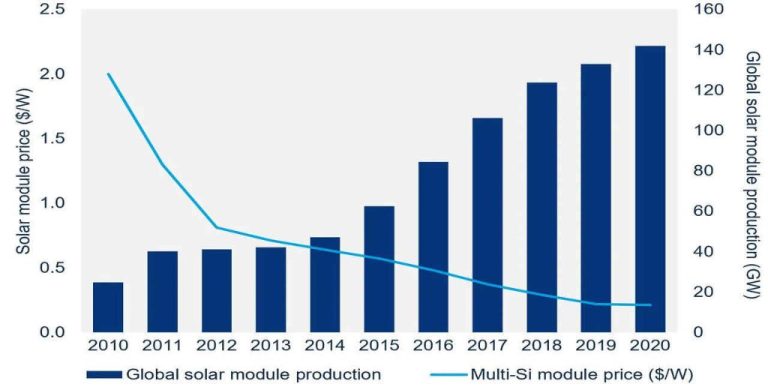Can I Be Off The Grid With Solar Energy?
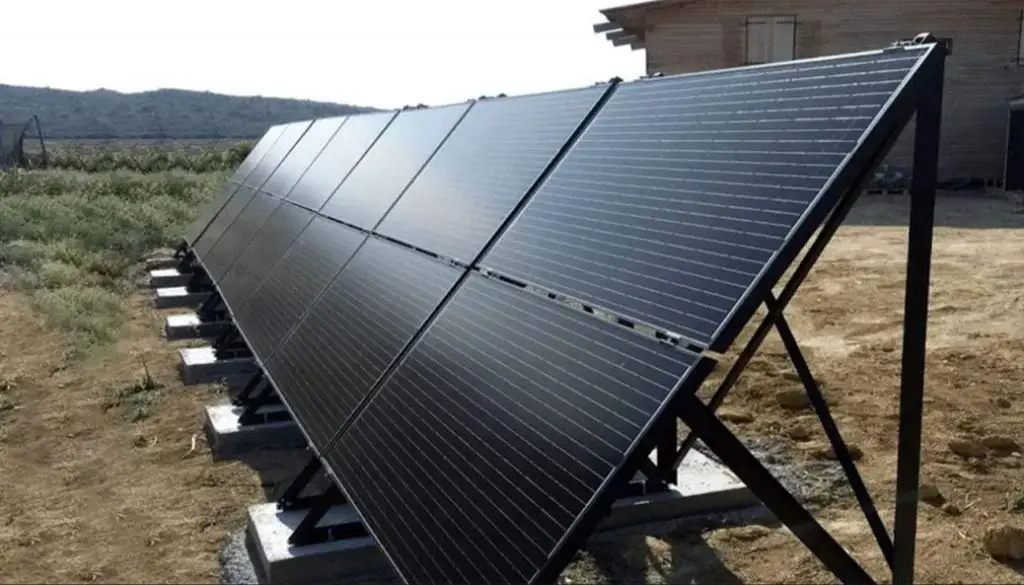
Going “off-grid” means living independently from the electrical grid and generating your own power. Traditionally, off-grid living has involved the use of non-renewable energy sources like propane, diesel or natural gas generators. However, with recent advances in solar technology and energy storage, it is now possible to go completely off-grid using renewable solar energy.
An off-grid solar energy system allows homeowners to disconnect from the utility grid and meet 100% of their electricity needs sustainably. Solar panels convert sunlight into electricity during the day, charging batteries that provide power at night. This makes it possible to have modern conveniences like lights, appliances and electronics without relying on the grid.
In this article, we’ll explore the benefits and challenges of going off-grid with solar energy. We’ll look at how to calculate your energy needs, the solar equipment required, energy storage options, lifestyle changes, costs and more. With smart planning, solar energy can provide the freedom and sustainability of an off-grid lifestyle.
Benefits of Going Off-Grid
Going off-grid provides a number of benefits, with the main ones being independence, sustainability, and cost savings over the long run. By generating your own electricity from solar panels, you become energy independent and don’t have to rely on the traditional electrical grid. This gives you control over your energy production and removes reliance on the utility company.
An off-grid solar system is also sustainable and environmentally friendly. Since your energy comes directly from the sun, your electricity production doesn’t create any greenhouse gas emissions. This helps reduce your carbon footprint. Over time, the investment in solar panels is returned through energy bill savings, making off-grid solar a cost-effective choice. Once you pay off the initial system costs, your electricity is basically free for the remainder of the solar equipment’s life.
Some key benefits highlighted in sources like Get Green Now and Waaree include:12
- No monthly electric bills
- Independence from the utility grid
- Clean, renewable solar energy
- Cost savings over time
- Reliable system with battery backup
- Low maintenance
Challenges of Going Off-Grid
While going off-grid with solar power can provide independence and ecological benefits, there are some key challenges to consider before taking the plunge:
The upfront costs of an off-grid solar system can be quite high, with some systems costing upwards of $30,000 (https://www.givingtreefarms.org/blog/overcome-off-grid-solar-challenges). These systems require a significant initial investment in solar panels, batteries, charge controllers and inverters. This high price point can deter some homeowners.
Maintenance is crucial for off-grid solar systems. The batteries must be monitored and maintained regularly to ensure maximum lifespan. Solar panels also require occasional cleaning and upkeep. Neglected systems can quickly become non-functional. Hiring a specialist to service the system can add to long-term costs (https://www.sfc.com/en/glossar/off-grid-energy/).
Reliance on favorable weather and ample sunlight is another potential drawback. Cloudy periods and winter months with fewer daylight hours can strain the system’s ability to recharge. Locations with suboptimal solar resources may struggle to generate sufficient renewable power year-round. Careful planning and smart equipment choices are key (https://www.sciencedirect.com/science/article/pii/S2405844023039178).
Calculating Your Energy Needs
The first step in designing an off-grid solar system is to carefully audit your home’s current energy use and estimate future needs. This allows you to right-size the system for your unique situation. You’ll need to account for all lighting, appliances, electronics, heating/cooling systems, and any other electric loads. Be sure to consider future energy needs as well – such as adding an electric vehicle, new appliances, etc. It’s best to overestimate rather than underestimate energy requirements. There are several online calculators and spreadsheets that can help estimate your total daily kilowatt-hours (kWh) used.
When auditing current usage, take inventory of all lighting fixtures, bulbs, appliances, etc. Note the wattages and estimated daily runtime for each. Measure the kWh usage of refrigerators, freezers, well pumps, and other major loads with a kilowatt meter if possible. Review past electric bills to help estimate average kWh use over months and seasons. Consider when usage might spike on cloudy winter days or due to seasonal AC use. Plan ahead for future high-power devices and increased needs.
Getting accurate kWh per day estimates is crucial for properly sizing the solar array, battery bank, inverter, and other system components. Take your time on this step, and calculate a realistic total that allows for future growth. Undersizing the system can lead to power shortages, while oversizing adds unnecessary costs. Work through a detailed energy audit and usage analysis to right-size your off-grid solar system.
Solar Equipment Needed
Going off-grid requires purchasing key pieces of solar equipment to collect, store, and distribute power. The main components include:
-
Solar panels – Photovoltaic panels convert sunlight into DC power. Renogy offers various solar panel sizes and models like monocrystalline and polycrystalline to meet energy needs (https://www.renogy.com).
-
Batteries – Storage batteries like Lithium Iron Phosphate from SungoldPower store excess solar energy and provide power when solar panels are not producing. The battery bank size depends on energy usage and backup needs (https://sungoldpower.com).
-
Power inverter – An inverter like those from Blue Pacific Solar converts DC power from batteries into standard 120V AC power to run home appliances and devices (https://www.bluepacificsolar.com).
-
Charge controller – This regulates power from solar panels to the battery bank, preventing overcharging and prolonging battery life.
Choosing the right solar equipment capacity and carefully sizing the system for your energy requirements is crucial for an effective off-grid solar setup.
Energy Storage and Batteries
When going off-grid, energy storage is essential to store power generated from your solar panels during the day for use at night. Batteries are needed to store this energy and provide backup power when the sun isn’t shining.
There are a few types of batteries commonly used for off-grid solar systems:
- Lead-acid batteries – These are cheaper but heavier, less efficient, and have a shorter lifespan than other options. Still commonly used.
- Lithium-ion batteries – More expensive upfront but they are lighter, more efficient, longer lasting, and better in cold weather. Often the preferred battery chemistry for off-grid solar. See https://bigbattery.com/solar/ and https://battlebornbatteries.com/learn/applications/off-grid/ for lithium options.
- Sodium-based batteries – An emerging battery chemistry, safe and potentially low cost but still unproven for home use.
The storage capacity required depends on your energy needs and desired backup time. Generally, 3-5 days of autonomy is recommended for off-grid solar systems. Calculate your average daily energy use, then multiply by 3-5 days to size your battery bank.
Backup Power Sources
Having a backup power source like a generator is highly recommended for any off-grid solar system (Off-Grid Solar Power Systems – Goal Zero). Solar energy can be intermittent due to weather conditions, so a secondary energy source acts as a critical backup to keep essential appliances running.
Gasoline, diesel, propane or natural gas generators are commonly used as secondary power sources. When selecting a generator, it’s important to consider the wattage capacity needed to power your essential loads during an outage. An automatic standby generator that turns on automatically during a power outage is ideal for seamless backup power (Whole House Off-Grid Battery Backup | Battle Born Batteries).
Regular maintenance and testing of the backup generator is critical. Fuel should be rotated and additives used to prevent stale fuel. Finally, generators should be operated occasionally to ensure proper functioning when needed.
Permits and Regulations
Going off-grid with solar energy often requires meeting certain regulations and acquiring permits. The specific rules vary significantly by location, so it’s important to research the requirements for your city, county, and state.
Many areas require building permits or electrical permits for installing an off-grid solar system. For example, in California you generally need a building permit for solar installations, even if going off-grid (https://www.greenlancer.com/post/need-for-off-grid-solar-permit). The permit ensures your system meets electrical and structural safety standards. Inspectors will check issues like wiring, mounting, and load calculations.
Even if permits aren’t legally required where you live, getting one can avoid potential issues down the road. Permits provide legal protection and documentation that you’ve met regulations. They also make it easier to sell the home later.
In terms of connecting to the electric grid, most utilities require you to get their approval before installing solar panels and going off-grid. You’ll usually need to sign paperwork to officially disconnect from the grid. There are often fees involved for the disconnection process.
Some utilities may not allow fully off-grid solar installations. It’s important to thoroughly research your local utility policies. You’ll also want to look into any renewable energy incentives or rebates available in your area before disconnecting from the grid.
Lifestyle Changes
Going off-grid with solar energy requires making some lifestyle changes to conserve energy and properly plan your usage and maintenance (https://sunbridgesolar.com/off-grid-solar-system-101/). Since you won’t have unlimited energy from the grid, you’ll need to be more mindful of your consumption. Simple things like turning off lights and appliances when not in use, switching to LED bulbs, using power strips, and setting thermostats a few degrees higher in summer or lower in winter can help reduce your energy needs.
It’s also important to track your energy use and production to find times of peak demand. You can then schedule high-energy activities like laundry, vacuuming, and dish washing during sunny hours when your solar panels are generating more electricity. Staggering usage allows your system to keep up rather than maxing out your batteries.
Maintenance is also key for off-grid solar systems. Keep your batteries properly charged, clear snow and debris off solar panels, and address any mechanical issues right away to maximize uptime. Having a backup generator helps for cloudy stretches. With some planning and conscious energy use, you can successfully go off-grid!
Financial Incentives
Going off-grid with solar can provide significant long-term cost savings, but the upfront costs of purchasing and installing a solar system can be daunting. Luckily, there are financial incentives available to help make solar more affordable.
The main financial incentive for residential solar is the federal solar tax credit, which allows you to deduct 26% of the cost of installing a solar system from your federal taxes through 2034 [1]. This credit applies to both on-grid and off-grid solar systems. There is no cap on the amount you can claim, and you can carry forward any unused credit for up to 5 years [2]. Many states and local governments also offer additional tax credits and rebates to further offset the cost of solar panel systems.
While the upfront investment in an off-grid solar system can be high, most solar systems pay for themselves within 10-15 years through energy savings. After this break-even point, your solar system will provide free electricity for the remainder of its 25+ year lifespan. Going off-grid means taking control of your energy costs and securing consistent, low-cost power for decades to come.

